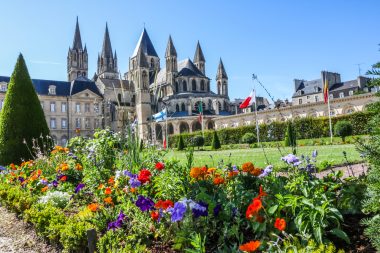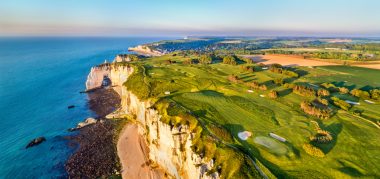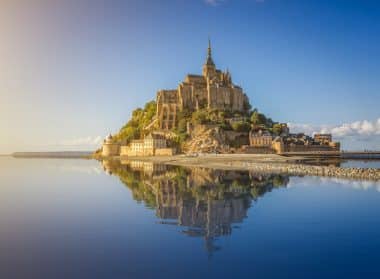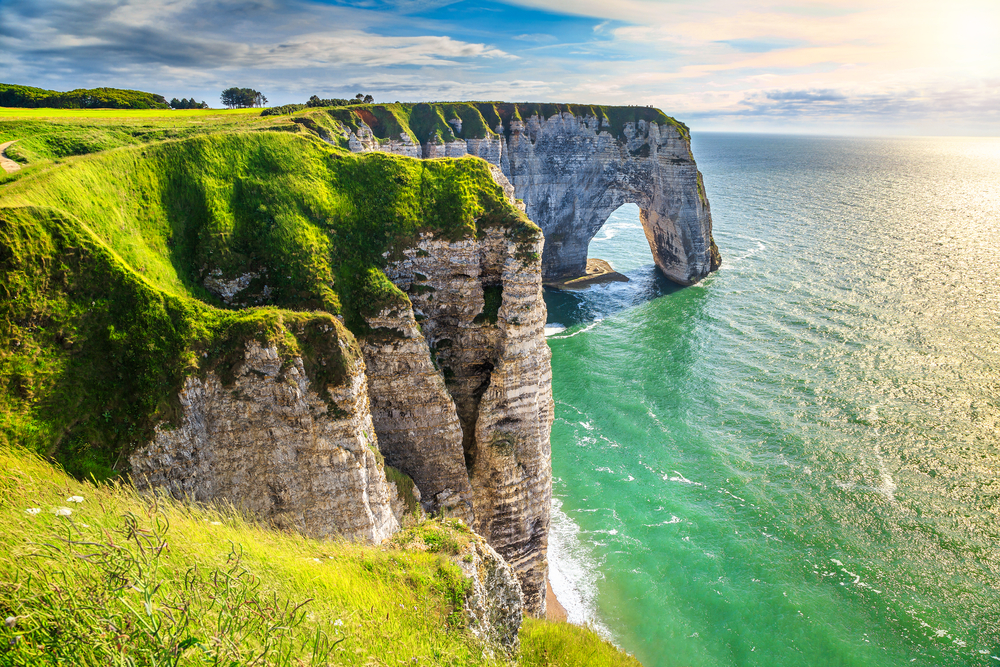The northern French region of Normandy stretches between Picardy in the northeast, Brittany in the southwest and the Loire regions as well as the Paris conurbation (Île-de-France) in the east, an hour and a half away by car.
In the west, Normandy has a long coastline on the Atlantic inlet La Manche (English Channel, English Channel), which separates France and England. Normandy, which is now administratively divided into five departments, has an area of almost 30,000 square kilometers, about the size of North Rhine-Westphalia or Belgium. A little more than three million inhabitants live in the relatively sparsely populated area, mainly in villages and small towns. Apart from the regional capital Rouen (110,000 inhabitants), which is 80 km inland, there are only three other Norman cities with more than 50,000 inhabitants:
They are the coastal cities of Le Havre (175,000), Caen (105,000) and Cherbourg (80,000). In addition to the coast, which is characterised by both rugged chalk cliffs and attractive sandy beaches, Normandy has a varied partly flat, partly hilly landscape in its hinterland. Typical of the landscape of the tourist-friendly region, which is famous for its cider and Calvados traditions, are the many apple tree meadows. Cows often graze here, providing the milk for the third “big C” of Norman cuisine, Camembert cheese.
Normandy – rugged alabaster coast and sophisticated Côte Fleurie

One of the most spectacular natural sights in Normandy is the Côte d’Albâtre. This more than one hundred kilometre long section of cliffs on the English Channel between Le Havre and Picardy is only interrupted in a few places by valley cuts or estuaries. The chalk cliffs of the cliffs have a strikingly bright alabaster colouring. Particularly dramatic and therefore a tourist hotspot is the Alabaster Coast section between Étretat and Fecamp with its 75 to 105 meter high, bizarre rock formations. The 40 km long Côte Fleurie (Flower Coast) between Honfleur and Cabourg also has flatter cliff sections, which, together with many fine sandy beaches and elegant spa towns such as Houlgate or Trouville-sur-Mer, form a special potpourri of elegant seaside resort atmosphere. In particular, the flower coast town of Deauville with its villas, its casino, its beach promenade Les Planches and its racecourse stands for Normandy de luxe.
Abbey island Le Mont-Saint-Michel
At the same time, one of the most famous tourist attractions (2.5 million visitors a year) and one of the smallest municipalities (30 inhabitants) in France is the island of Mont-Saint-Michel, which is about half a square kilometre in size. The small, almost one hundred metre high rocky island is located just under 1000 m off the Normandy coast, close to the border with the Breton peninsula of Cotentin in a mudflat area that dries up at low tide. The combination of a rocky island accessible via a footbridge and a monumental Benedictine abbey surrounded by small alleys, built here in the High Middle Ages, is unique. The sacred building, which is one of the largest preserved building ensembles of the Middle Ages in France , was added to the UNESCO World Heritage List in 1979.
Normandy – Historic Ground

In addition to the Saint-Michel-Klosterberg, there are numerous other impressive references to the history of Normandy. These include the world-famous, almost 70-metre-long Tapestry of Queen Mathilde (Bayeux Tapestry) exhibited at the Centre Guillaume le Conquérant in the Bessin town of Bayeux. The artwork, embroidered around 1070, depicts scenes of the conquest of England by the Norman Duke William the Conqueror in 1066. The most important event in connection with Normandy in modern history was the landing of Allied units in the Second World War in the summer of 1944.
With the landing (“Operation Overlord”) and the subsequent liberation of Nazi-occupied France, the final phase of World War II began in Europe. A number of museums and memorials commemorate this historical turning point, which began with D-Day on 6 June 1944. The most important museum on the subject is the Museum Mémorial in Caen, which places the Battle of Normandy in the context of European history before and after 1944. Throughout Normandy, dozens of Allied and German military cemeteries confront visitors with the consequences of the war.
Inspiration for the art world
The graceful natural and cultural landscapes, the picturesque Norman places such as the charming half-timbered village of Beuvron-en-Auge have been and continue to be a great attraction for many artists. The Seine town of Giverny also stands for this charm. In the village of 500 inhabitants, the Normandy vacationer can feel art inspiration in the garden of the painter legend Claude Monet, which has been rededicated to the lovingly maintained Musée des impressionnismes Giverny. It was here in the Département Eure that Monet, who died in 1926, spent the second half of his life, painted his famous water lily paintings and attracted numerous other Impressionist painters, who formed an artists’ colony in Giverny that is still active today.
Rouen and Le Havre

The two largest cities in Normandy, Rouen and Le Havre, are quite different from each other, but they are both popular tourist destinations. With its picturesque old town streets and its important Gothic church buildings, Rouen offers an excellent atmosphere to remember Joan of Arc, who was imprisoned in the donjon of Rouen. The port city of Le Havre, on the other hand, which was almost completely destroyed in the Second World War, impresses with works by the master builders August Perret and Oscar Niemeyer depicting modern architectural history.


